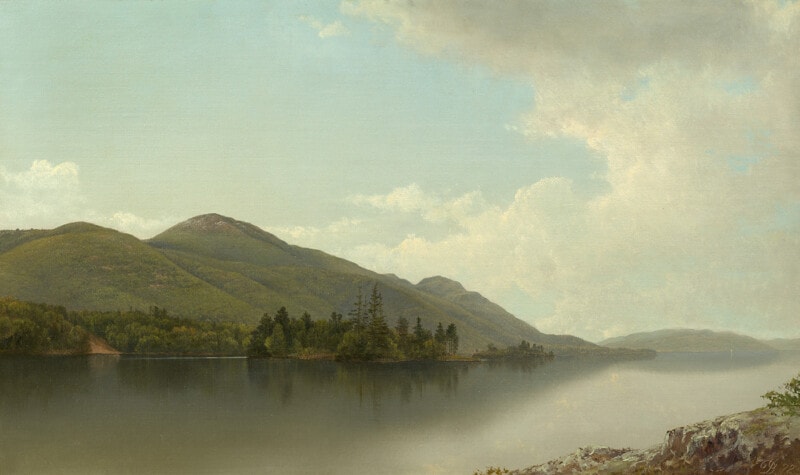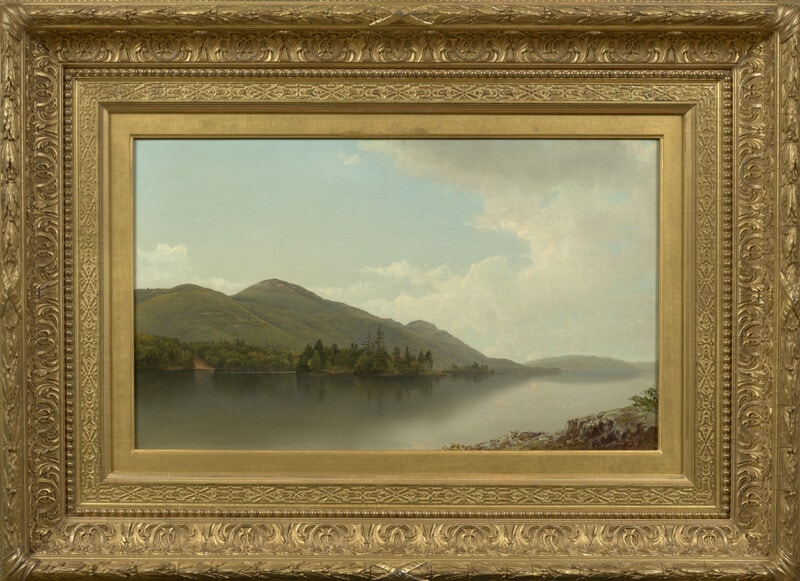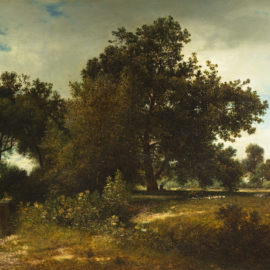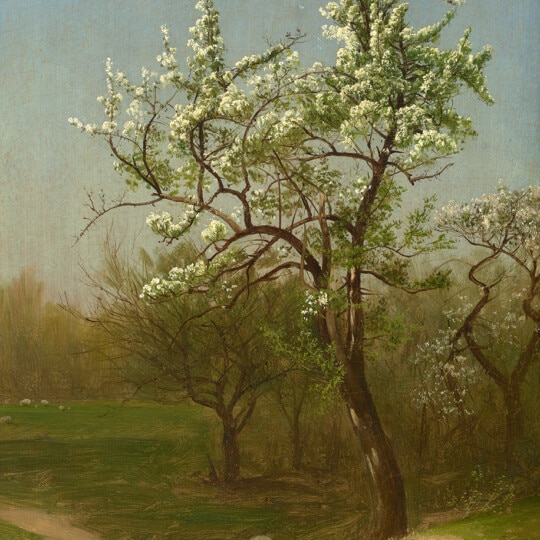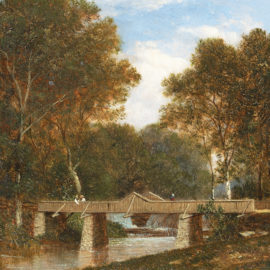SOLD Buck Mountain, Lake George, 1872
by David Johnson (1827–1908)15 x 25 inches
Monogrammed and dated lower right: DJ 72; on verso: Buck Mountain. / Lake George. / David Johnson, 1872.
Provenance
Knoedler & Co., New York, New York
Berry-Hill Galleries, Inc., New York, New York
Private collection, Canada, acquired from above
Sale, Sotheby’s, New York, New York, January 18, 2023, lot 49, from above
Exhibited
Nature Transcribed: The Landscapes and Still Lifes of David Johnson (1827-1908), Herbert F. Johnson Museum of Art, Ithaca, New York, November 5–December 23, 1988; University of Maryland Art Gallery, College Park, Maryland, February 1–March 5, 1989; Georgia Museum of Art, Athens, Georgia, April 1–May 7, 1989; National Academy of Design, New York, New York, July 10–September 10, 1989
Berry-Hill Galleries, Inc., New York, New York, Hudson River School Days, November 18, 1992–January 9, 1993
Literature
Nature Transcribed: The Landscapes and Still Lifes of David Johnson (1827-1908) (Ithaca: Herbert F. Johnson Museum of Art, 1988), 48, 71, no. 29.
Related Works
Cook’s Island, Lake George, 1869, oil on canvas, 8½ x 13½ inches; Portland Art Museum, Oregon
Study of Nature, Dresden, Lake George 1870, oil on canvas, 13¾ x 21¾ inches, signed lower right; Albany Institute of History & Art, New York
Harbor Island, Lake George, NY, 1871, oil on canvas, 16⅜ x 26¼ inches; The Currier Museum of Art, Manchester, New Hampshire
Note: Buck Mountain sits on the east side of Lake George, at the base of the Adirondack Mountains in Upstate New York. Nicknamed the Queen of American Lakes, Lake George became a popular site for many Hudson River School painters, including Thomas Cole and John Frederick Kensett. David Johnson painted numerous depictions of the serene topography from various vantage points. Not only did the location offer majestic views, but it also held historical importance, as it was the site of several military campaigns during the French and Indian War.
Artist Biography
As a second-generation member of the Hudson River School, David Johnson experienced artistic success during the second half of the nineteenth century. The style of his rocky landscape scenes tended to coincide with whatever genre the current art market dictated as on trend, with his later works demonstrating a distinctly luminist influence.
By Chelsea DeLay
I. Biography
II. Chronology
III. Collections
IV. Exhibitions
V. Memberships
VI. Suggested Resources
VII. Notes
I. Biography
Born in New York City on May 10, 1827, David Johnson went on to become a skilled landscape artist who led a relatively quiet life.[1] Johnson was essentially a self-taught
This painting is no longer available. Please contact us for similar works or more information.

